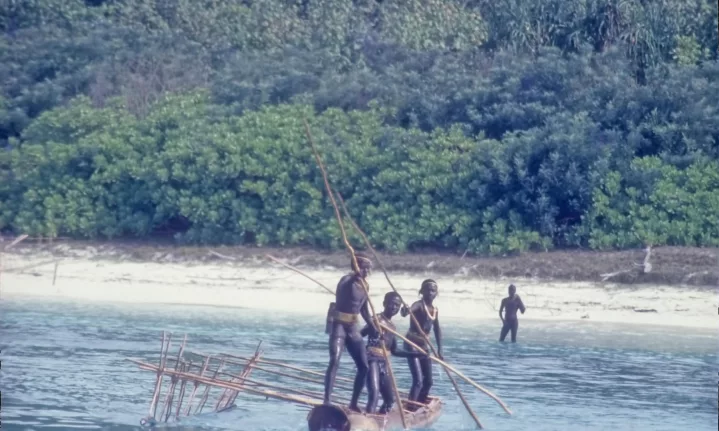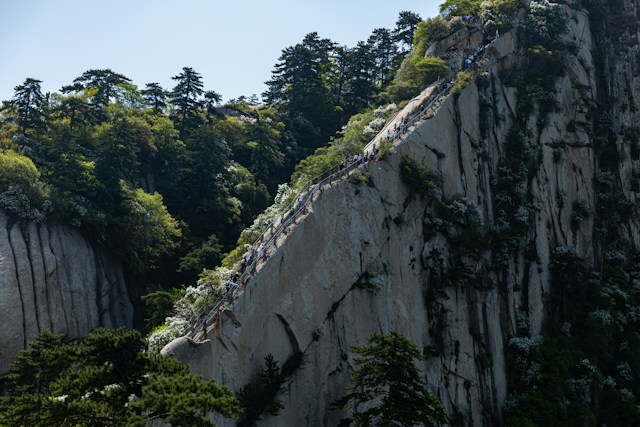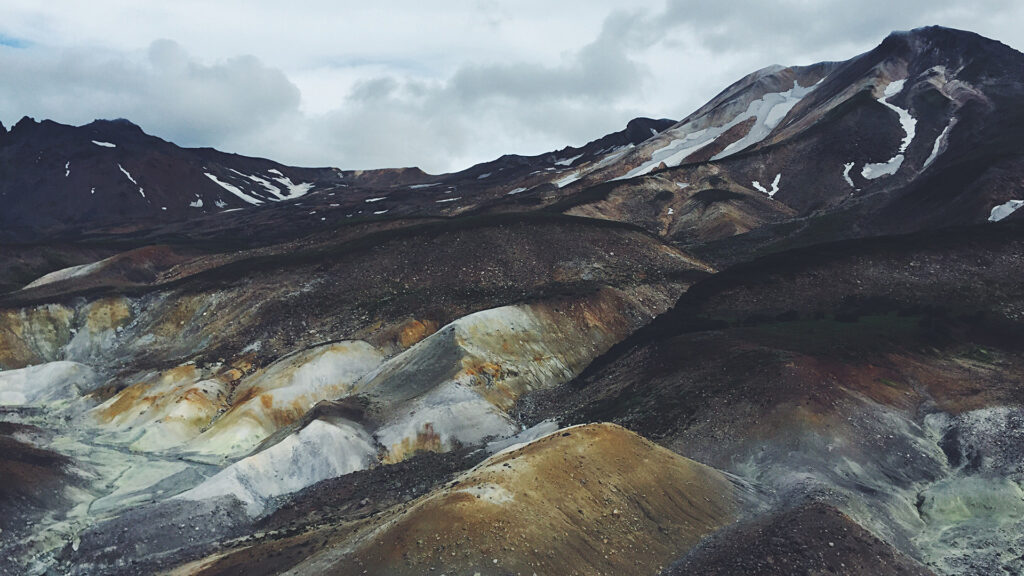Introduction:
The world is a vast tapestry of wonders, each corner holding its unique allure and mysteries. However, among the enchanting landscapes and cultural gems, there are places shrouded in danger and peril that beckon the bravest adventurers. In this exploration, we uncover 10 such locations that, due to their inherent risks and ominous reputation, might leave even the most intrepid travelers second-guessing their wanderlust.
Snake Island, Brazil: A Venomous Haven:
Island of Serpents: Ilha da Queimada Grande, commonly known as Snake Island, is situated off the coast of Brazil. Renowned for its staggering snake population, particularly the highly venomous golden lancehead pit viper, the island is considered one of the most dangerous places on Earth.
Restricted Access: Due to the inherent danger posed by the snakes, access to Snake Island is strictly prohibited. The Brazilian government enforces a ban to protect both visitors and the delicate ecosystem, making it a forbidden destination for all but a select few researchers granted special permission.

Elephant Kingdom, Chonburi, Thailand: The Land of Restless Giants:
Herd of Giants: Thailand’s Elephant Kingdom, officially known as the Ban Ta Klang Elephant Village, is home to the largest population of domesticated elephants in the country. While these majestic creatures are revered, the conditions in some elephant camps have raised concerns about animal welfare.
Controversial Practices: The controversial practices, including alleged mistreatment and overworking of elephants, have led to a reputation that discourages ethical travelers from supporting such establishments. As awareness grows, conscientious tourists increasingly opt for sanctuaries committed to responsible and compassionate elephant care.

North Sentinel Island, India: A Fortress of Isolation:
Isolation and Hostility: North Sentinel Island, part of the Andaman and Nicobar archipelago, is home to the Sentinelese, one of the last uncontacted tribes on Earth. The inhabitants fiercely resist any attempts at contact, and the Indian government enforces strict regulations to protect their isolation.
Restricted Access: Due to the Sentinalese’s hostility towards outsiders and the potential risk of introducing diseases to which they lack immunity, the Indian government prohibits travel to the island. Any attempts to approach are met with aggression, making it a place best left untouched.

Mount Huashan, China: The Precarious Path to Spiritual Heights:
Sacred Peaks: Mount Huashan, one of China’s Five Great Mountains, is revered for its spiritual significance and breathtaking scenery. However, it is also notorious for the perilous hiking trails that lead to its peaks, where ancient temples offer stunning views.
Dangerous Paths: The treacherous paths, including the infamous Plank Walk in the Sky, challenge even the most experienced hikers. The allure of spiritual exploration and adrenaline-pumping adventure coexist, but the risks associated with Mount Huashan make it a destination only for the daring.

Chernobyl Exclusion Zone, Ukraine: Echoes of Nuclear Catastrophe:
Nuclear Ghost Town: The Chernobyl Exclusion Zone, a haunting reminder of the 1986 nuclear disaster, encompasses the abandoned city of Pripyat and its surroundings. Radioactive remnants and crumbling structures make it a hazardous area, even decades after the catastrophic event.
Restricted Access: While guided tours are permitted for those seeking a glimpse into the post-apocalyptic landscape, the dangers of radiation exposure necessitate strict regulations. Visitors must adhere to designated paths and precautions, making it a place where curiosity is tempered by the sobering reality of nuclear fallout.

Danakil Depression, Ethiopia: Earth’s Most Inhospitable Terrain:
Land of Extremes: The Danakil Depression, situated in the Afar Triangle, is one of the hottest and most inhospitable places on Earth. Boasting extreme temperatures, volcanic activity, and vast salt flats, this otherworldly landscape poses formidable challenges to those who dare to venture into its depths.
Harsh Conditions: The searing heat, active volcanic vents, and minimal infrastructure make the Danakil Depression a destination that demands careful planning and a high tolerance for extreme conditions. Despite its rugged beauty, it remains a place of considerable risk.

The Death Road, Bolivia: A Thrilling Descent with a Dark Past:
World’s Most Dangerous Road: Yungas Road, colloquially known as the Death Road, winds its way through the Bolivian Andes. Renowned as the world’s most dangerous road, it earned its ominous nickname due to its narrow passes, precipitous drops, and a history of fatal accidents.
Adrenaline Junkie’s Paradise: The Death Road has become a magnet for thrill-seekers seeking the ultimate downhill biking adventure. However, the risks associated with its treacherous conditions cannot be understated, making it a destination that combines excitement with a sobering reminder of its dark past.

Gates of Hell, Turkmenistan: Eternal Flames in the Desert:
Derweze Gas Crater: The Darvaza Gas Crater, also known as the Gates of Hell, is a fiery pit in the Karakum Desert, Turkmenistan. Created by a natural gas field collapse, the crater has been perpetually burning since 1971, creating an otherworldly spectacle.
Unpredictable Terrain: The remote location, unpredictable gas emissions, and the fiery chasm itself pose risks to those venturing into this surreal landscape. Despite its mesmerizing allure, the Gates of Hell remain a place where the boundaries between fascination and peril blur.

Valley of Death, Kamchatka, Russia: A Toxic Landscape:
Mutnovsky Volcano: The Mutnovsky Volcano in the Kamchatka Peninsula is part of the Pacific Ring of Fire, known for its intense volcanic activity. The Valley of Death, surrounding the volcano, earns its ominous name due to its toxic fumaroles emitting dangerous gases.
Chemical Hazards: The valley’s landscape is marred by acidic hot springs and sulfuric gases, making it a perilous destination. The risks of exposure to harmful substances and unpredictable volcanic activity deter all but the most intrepid adventurers.

Madidi National Park, Bolivia: Breathtaking Beauty with Hidden Dangers:
Rich Biodiversity: Madidi National Park, nestled in the Amazon Rainforest, is celebrated for its unparalleled biodiversity and pristine landscapes. However, its lush beauty conceals hidden dangers, including venomous creatures, challenging terrains, and potential encounters with elusive predators.
Navigating the Jungle: The dense vegetation, remote location, and the presence of potentially dangerous wildlife require travelers to exercise caution and engage experienced guides. While the allure of exploring one of the world’s most biodiverse regions is undeniable, the risks associated with Madidi National Park demand a respectful and vigilant approach.

Conclusion:
While the world beckons with its myriad wonders, these 10 places stand as testaments to the dichotomy of allure and danger. Whether due to natural elements, historical tragedies, or cultural isolation, these destinations command respect and caution from those tempted to explore their mysteries. As we marvel at the daring adventurers who tread these perilous paths, it is crucial to acknowledge that some places are best admired from a distance, their dangers adding an extra layer of intrigue to the vast tapestry of our planet.
